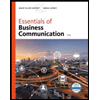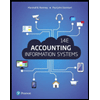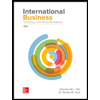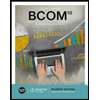BUSS320 - Week 1 Lecture
.docx
keyboard_arrow_up
School
Bryant & Stratton College *
*We aren’t endorsed by this school
Course
320
Subject
Business
Date
May 3, 2024
Type
docx
Pages
7
Uploaded by LieutenantSummer1187 on coursehero.com
Marketing Management and the 5Cs
Week 1 Lecture Welcome to BUSS320 – Marketing Management! This week we will review, what is marketing? Many confuse the concept of marketing is all about sales and advertising, which is only partly true. Marketing is about what the business is looking to communicate to its customers. Marketing management is using all of the various types of information and using them to formulate a cohesive marketing strategy. Below is a video that describes marketing, but also includes other elements to consider when building a marketing plan.
Introduction to Marketing
The Marketing Management Framework outlines the structure which helps determine what a company needs to closely examine when formulating a marketing strategy. By following this diagram, a marketer can ensure all factors are considered and in the end, creating an effective marketing strategy. Over the next couple of weeks, we will look at each square and why they are important. This week we will discuss the first one with the 5Cs and what each
entails.
CUSTOMER:
When a company is looking to develop a marketing strategy for its products or services, the more they know about their audience the more effective the marketing message. The first area of focus is the Customer. In the research process, there are three areas to use in order to closely examine the group of customers based on similar qualities:
BUSS320 Marketing Management 2
1.
demographics:
The customer’s demographics help narrow down a large group to similar characteristics such as: gender, race (ethnicity), age, household income, disabilities, education, employment status, children, location, and marital status. The buying habits of a customer who has higher income and a family may be considerably different than someone who is single and has a lower income. 2.
geographic:
This quality is more straight-forward with its information. Although this would most likely include a region of the country, state, or city, other geographic information to consider could be if the customer lives in a rural or urban setting, close to the business’ locations, or near landmarks such as an ocean or mountain setting. 3.
psychographics:
The information from this category include: activities, interests, opinions, habits, hobbies, and their values. Why would it be important to know the target markets are avid hikers, go to
movies frequently, or love to travel? Test your knowledge: Select the characteristic with the quality. Example: New York state = geographic
makes $100,000 a year (demographic)
avid reader (psychographic)
lives on a farm (geographic)
has a Bachelor’s degree (demographic)?
female (demographic)
Boston, MA (geographic)
married with 2 children (demographic)
supports animal shelters (psychographic)
unemployed (demographic)
COMPANY:
When a company is creating a marketing strategy, it is important to understand what the business stands for and its belief structure. A marketer can closely examine this information through the company’s mission statement and conducting a SWOT (
s
trengths, w
eaknesses, o
pportunities, and t
hreats) analysis. What is a mission statement?
A mission statement is a written declaration of an organization’s core purpose and focus that normally remains unchanged over time. Properly crafted statements (1) serve as
BUSS320 Marketing Management 3
filters to separate what is important from what is not, (2) clearly state which markets will be served and how, and (3) communicate a sense of intended direction to the entire organization. Mission statements help companies maintain the focus which transcends time, regardless of the changing products, influences, and short-term goals of the company. As Jeff Bezos states:
“It helps to base your strategy on things that won’t
change. When I’m talking
with people outside the company, there’s a question that comes up very commonly: 'What’s going to change in the next five to ten years?' But I very rarely get asked, 'What’s not
going to change in the next five to ten years?' At Amazon we’re always trying to figure that out, because you can really spin
up flywheels around those things. All the energy you invest in them today will still be paying you dividends ten years from now. Whereas, if you base your strategy first and foremost on more transitory things — who your competitors are, what kind of technologies are available, and so on — those things are going to change so rapidly that you’re going to have to change your strategy very rapidly, too.” (Sherman, 2017)
SWOT Analysis:
The SWOT Analysis is an exercise which looks at the business’ or a project’s strengths, weaknesses, opportunities, and threats. Below is a video which explains each of these and how to apply it to an example with Joe the Florist.
Animation: SWOT Analysis
Strengths and weaknesses focus on internal factors which are within the company’s control. The exercise of performing a SWOT analysis helps better gage strengths such as an area of expertise or unique quality. Weaknesses are just as important to consider since these can be factors which present roadblocks with your product or service. When a company can pinpoint what is lacking, and within their control, the easier it is to make a concerted effort to address these issue(s). Opportunities and threats are external to a company and not within their control. In performing a SWOT analysis, an organization can discover circumstances where there could be an added advantage to the product or specific project. Threats can be somewhat unpredictable, but in better understanding what they could be, a plan can be put in place to help deal with the potential circumstances.
CONTEXT:
Your preview ends here
Eager to read complete document? Join bartleby learn and gain access to the full version
- Access to all documents
- Unlimited textbook solutions
- 24/7 expert homework help
Related Questions
Cohort segmentation is a method used to segment the market for the greatest strategic implications. Find a healthcare related service, product, or organization on one of a multitude of social networking sites. Review the seven categories. Which cohort segmentation section is the service, product, or organization geared for on the site? Why would this type of marketing be successful?
Select another cohort segmentation category. From a management perspective, what recommendations could you make to the marketing department to broaden the marketing efforts to include another cohort segmentation not currently being targeted.
arrow_forward
As a marketing consultant, a prospective business man has approach you to advise him on his intention of venturing into the market with a new product.
1. Explain to him the approaches he can consider
2. Analyze the factors that need to be consider for each approach.
3. Illustrate to him the potential stages of the market his product needs to survive to be successful on the market.
arrow_forward
The objectives/goals section offers more specifics about why readers arereading the marketing plan. What does the company want to achieve, bothoverall and with this particular marketing plan?
arrow_forward
CLO #1 - Identify, define, and describe key marketing components, product life cycle, 3Cs and 4Ps and corresponding marketing strategies.
CLO #2 - Recommend solutions to marketing problems using appropriate concepts, principles, analytical techniques, and theories.
CLO #3 - Evaluate the quality of proposed solutions to marketing management problems against appropriate criteria, including organizational constraints.
CLO #4 - Summarize the relevance and application of concepts, principles, and theories used in marketing to contemporary events and global markets and evaluate marketing decisions.
CLO #6 - Evaluate the ethical implications and aspects of social responsibility of certain marketing campaigns and strategies.
arrow_forward
Many businesses find it challenging to integrate a customer-based marketing strategy into their Web site designs because they lack the necessary resources. Outline what an organization may do to overcome the challenges that it is facing and why this is a tough situation.
arrow_forward
A Marketing Information System consists of at least four (4) elements: internal data/records, marketing intelligence, decision tools/models and marketing research.
They are extremely useful because they help managers to make better decisions that satisfy clients, reduce risk, save money or enhance profits.
1. Design a Marketing Information System for an organisation of your choice. Select the components of the System that in your opinion are the most desirable for the organisation you have selected.
2. Explain why you have selected these components and how you expect them to assist marketing managers with their decision making.
arrow_forward
Managers must understand their aims to strengthen customer relations.CRM objectives should have four parallels.
arrow_forward
As a marketing manager in your company, you were asked to develop a marketing plan for a service that your company would like to bring to market. You can choose to adopt an existing company from a particular industry, or you can choose to create a new one. You are required to prepare the following:
To assess marketing opportunities by analysing customers, competitors, and their own company (3Cs),
To develop the segmenting, targeting and positioning (STP), and
To design effective marketing programs by devising appropriate recommendations for pricing, promotion, place, and services products (4 Ps).
arrow_forward
3. Discusses how these groups will be targeted (once identified), by explaining three (3) digital marketing options such as email, voice, text, app alert, app redemption token, etc. The report should be in MS Word format (or equivalent). For the purpose of this assessment, the following assumptions apply: ●95% of sales are electronic (credit card/phone), 5% are cash; ●55% of customers use a loyalty card at time of transaction; ●customers who have a loyalty card have provided credit card/phone/email details; and ●Imagine P/L has a smartphone app, which supports tokens (price discounts, etc) and alerts. 25% of customers have downloaded and use the app. Report Structure Your report should include the following sections: ●Introduction: Briefly explaining the purpose of the report ●Technology Options: Where you describe each type of technology ●Sales Solution: Where you explain how the options will increase sales ●Marketing Channels: Where you discuss how to reach customers…
arrow_forward
In marketing, a strategy is:
Select one:
a. E-Marketing strategy
O b. A set of ideas that outline how a product or brand will achieve its objectives
C. Budget Planing
O d. Evaluation plan
arrow_forward
Primarily, we want you to examine the branding strategies of our competitors. This report will function as a brand audit that allows us to examine our competitors’ strengths, weaknesses, customer expectations, and our own relative position in the market.
These details form the basis of the main branding elements. I met with our CEO, Shanice Watts, and she wanted me to emphasize the following eight categories we would like you to analyze in your report about our two biggest competitors:
brand personality
brand image
brand identity
brand differentiation
brand positioning
brand communication
brand loyalty
brand equity (including financial equity)
Slate’s executive teams are really looking forward to your report. Thanks for helping us with this.
arrow_forward
How is market intelligence used in marketing?
O It is used to do media research
OIt is used to do economic forecasting
O It is used to define potential target markets and to determine how to reach them
It is used to define a product and to determine how it should be packaged
arrow_forward
1.Assume that you are a Marketing Manager and your company wants you to deploy an efficient Marketing information system. Explain how marketing intelligence will help in collecting information?
arrow_forward
Looking into the marketing environment Spar group is world-renowned for in-store merchandising in South Africa, the Spar group is a JSE-listed wholesaler and distributor of goods, and service provider to Spar supermarkets. Spar has a clientele worth billions of rands and has approximately 20 00 stores in 35 countries. Communication is very important to the Group and therefore its website enables clients to communicate directly with members of Spar’s merchandising team, and can alert customers of changes in in-store conditions immediately, keeping them in touch with their retail goals. Spar’s merchandising team along with their web-based system ensures that products are on the shelf and in front of customers for longer, assisting time-poor, busy customers. Technology helps Spar to uncover which stores are not performing to expected standards and what the reasons are for this underperformance. Spar’s web-based process analyses real-time data of store conditions. This allows Spar to take…
arrow_forward
Describe the concept of predictive analytics in CRM. How can predictive analytics be leveraged to anticipate customer behavior and improve marketing and sales strategies?
arrow_forward
Rita has set up a company to manufacture and market GPS tracking systems for cross country runners who like to go on trails in uninhabited areas. A GPS could help if someone gets lost while running on these types of trails. Rita is trying to figure out which approach she will use to bring awareness to her product. She is also trying to understand who her customer would be. She has decided a sales orientation would be best suited for her new product.
Questions
What are important considerations for and against using a sales orientation approach? In your answer discuss what a sales orientation is and why it might or might not work for Rita.
Which orientation do you think would best be suited for this type of product and why? (Explain how this chosen orientation would be beneficial for this business.)
arrow_forward
Consider a fitness center. Determine the types of organizational records that the center has available. Explain how these records are used in terms of marketing efforts. Do they effectively generate a consumer profit? If not, what other types of information needs to be solicited to generate an effective consumer profile?
arrow_forward
PART 1: Choose one company that offers multiple products or services. For example:
Gap Inc has Old Navy, The Gap, and Banana Republic
PART 2: Imagine that this company is looking to launch several marketing campaigns throughout 2022 and they need to know what types of campaigns would be most effective. You are responsible for comparing TWO existing product/service customers so the marketing campaigns will have the biggest impact. What kinds of research methods would you use to get that information (You should name at least 3)? Why would you use these methods?
arrow_forward
PART 1: Choose one company that offers multiple products or services. For example:
Gap Inc has Old Navy, The Gap, and Banana Republic
PART 2: Imagine that this company is looking to launch several marketing campaigns throughout 2022 and they need to know what types of campaigns would be most effective. You are responsible for comparing TWO existing product/service customers so the marketing campaigns will have the biggest impact. What kinds of research methods would you use to get that information (You should name at least 3)? Why would you use these methods?
thnkyouuuuuuuuuuuuuuu
arrow_forward
Many organizations find it difficult to incorporate a customer-based marketing strategy into their Web site designs.Explain why this is a challenge and outline things an organization can do to overcome these difficulties.
arrow_forward
Belbin Beverages Ltd flagship product, a honey flavoured beer targeted to women in the age bracket 21 to 40 have been experiencing slow sales over the past year. However, Belbin’s other beer products have continued to perform well. Your task is to conduct marketing research todetermine whether the product should be continued.You must write a report about the marketing research process and your findings.Your report should include:1. A definition of the problem and one research objective2. A descriptive research survey approach. This includesa. Objectives of the survey ( define at most three objectives)b. Details about the Survey approachc. A questionnaire (with at least 10 questions) that links to the research objectived. How the survey was administered (be specific regarding the amount of workers involved, the place/s and time/s)2. An analysis of the data presented graphically (use fictitious/self created data) 3. A presentation of the findings and conclusion
arrow_forward
When reviewing the performance of an implemented marketing strategy which factors are likely to be considered?SalesGross marginNumber of consumersCoupon redemptionROIAll are correctNone are correct2. What company document is used to develop other important company documents?marketing planpositioning statementmission statementPositioning statementAll are correctAll are incorrect3. A document with four elements that together provide instructions/directions to guide markeing strategy such as; product development, promotion, place, price and target consumers.positioningsegmentationtargetingvalue propositionPositioning statementnone of these answers are correct4. When reviewing the performance of an implemented marketing strategy which factors are likely to be considered?SalesGross marginNumber of consumersCoupon redemptionROIAll are correctNone are correct
arrow_forward
Effective marketing research follows the six step shown in Figure 1. Discuss with example every process based on the diagram.
Figure 1
Marketing Research Process
Source: Kotler & Keller, (2012)
arrow_forward
hi so i have this pie chart and promotion strategy for my marketing subject i have to explain the theory, then explain what strategy have been used, this is what is needed from my Assignment guid the following:
Using Promotion marketing mix tools, please provide:
brief analysis of the company’s current promotional strategy for their current market by showing an analysis of their:
promotional mix tools
recommendations for the company of what new promotional strategy that would best serve the new target market and be in harmony with the new positioning strategy developed in A1/2. What should they change in their promotional efforts, so they can attract the new target market? Shall they introduce a new promotional strategy? How and why? Your recommendation should be detailed and actionable.
For your recommendation, you must show:
three (3) promotional mix tools (at least)
an IMC pie chart
hope you can help me i really confused
arrow_forward
CLO #1 - Identify, define, and describe key marketing components, product life cycle, 3Cs and 4Ps and corresponding marketing strategies.
CLO #2 - Recommend solutions to marketing problems using appropriate concepts, principles, analytical techniques, and theories.
CLO #4 - Summarize the relevance and application of concepts, principles, and theories used in marketing to contemporary events and global markets and evaluate marketing decisions.
arrow_forward
. You have a marketing funnel of 10000 potential customers, 1000 leads, and 50
conversions, out of which only 10 are new customers. How will you plan your marketing
campaigns and focus on which part of the marketing funnel?
arrow_forward
Explain the purposes underlying data analytics and why this approach has become so important to marketing management . In your discussion you should also bring in the concepts of research and marketing information systems. Marketers also talk about the importance of story telling as they conceive ways to organize and display data. Explain how data analytics can really aid in this process of story telling and how this can enhance a manager’s decision-making effectiveness.
arrow_forward
Marketing objectives can best be described as:a. How the company utilizes it resourcesb. The end results or outcomes that a company is looking to achieve within a given timeframec. The tactics that the company utilizesd. The amount of profit the company wants to achieve over a given period
arrow_forward
The marketing decision support system (DSS) is an interactive computerised information system. I need to explain the purpose of this DSS as well as the characteristics it needs to be effective.
arrow_forward
Your company's marketing manager implements the company's new marketing strategy and tactics on the market. What types of information does your marketing manager need to monitor to judge the plan's implementation success and strategic effectiveness ?
a. human resources numbers, company budget, competitor campaigns
b. profits, customer relations, sales information, and competitor reactions
c. administrative costs, billing procedures, customer complaints, worker turnover rates
Please explain why you chose A,B or C
arrow_forward
You are the new marketing manager for The Westside Coffee Company. You have been tasked with developing a strategic marketing and communications plan to improve store performance. Over the next few weeks, you will develop different elements of your marketing and communications plan. Consumer/Marketplace Insights and Micro-Moments Resource: Read the articles from the University Library. Perform a price/quality segmentation analysis using the resources provided in the University Library. You will need toYou are the new marketing manager for The Westside Coffee Company. You have been tasked with developing a strategic marketing and communications plan to improve store performance. Over the next few weeks, you will develop different elements of your marketing and communications plan.
Consumer/Marketplace Insights and Micro-Moments
Resource: Read the articles from the University Library.
Perform a price/quality segmentation analysis using the resources provided in the University…
arrow_forward
SEE MORE QUESTIONS
Recommended textbooks for you

BUSN 11 Introduction to Business Student Edition
Business
ISBN:9781337407137
Author:Kelly
Publisher:Cengage Learning

Essentials of Business Communication (MindTap Cou...
Business
ISBN:9781337386494
Author:Mary Ellen Guffey, Dana Loewy
Publisher:Cengage Learning

Accounting Information Systems (14th Edition)
Business
ISBN:9780134474021
Author:Marshall B. Romney, Paul J. Steinbart
Publisher:PEARSON


International Business: Competing in the Global M...
Business
ISBN:9781259929441
Author:Charles W. L. Hill Dr, G. Tomas M. Hult
Publisher:McGraw-Hill Education

Related Questions
- Cohort segmentation is a method used to segment the market for the greatest strategic implications. Find a healthcare related service, product, or organization on one of a multitude of social networking sites. Review the seven categories. Which cohort segmentation section is the service, product, or organization geared for on the site? Why would this type of marketing be successful? Select another cohort segmentation category. From a management perspective, what recommendations could you make to the marketing department to broaden the marketing efforts to include another cohort segmentation not currently being targeted.arrow_forwardAs a marketing consultant, a prospective business man has approach you to advise him on his intention of venturing into the market with a new product. 1. Explain to him the approaches he can consider 2. Analyze the factors that need to be consider for each approach. 3. Illustrate to him the potential stages of the market his product needs to survive to be successful on the market.arrow_forwardThe objectives/goals section offers more specifics about why readers arereading the marketing plan. What does the company want to achieve, bothoverall and with this particular marketing plan?arrow_forward
- CLO #1 - Identify, define, and describe key marketing components, product life cycle, 3Cs and 4Ps and corresponding marketing strategies. CLO #2 - Recommend solutions to marketing problems using appropriate concepts, principles, analytical techniques, and theories. CLO #3 - Evaluate the quality of proposed solutions to marketing management problems against appropriate criteria, including organizational constraints. CLO #4 - Summarize the relevance and application of concepts, principles, and theories used in marketing to contemporary events and global markets and evaluate marketing decisions. CLO #6 - Evaluate the ethical implications and aspects of social responsibility of certain marketing campaigns and strategies.arrow_forwardMany businesses find it challenging to integrate a customer-based marketing strategy into their Web site designs because they lack the necessary resources. Outline what an organization may do to overcome the challenges that it is facing and why this is a tough situation.arrow_forwardA Marketing Information System consists of at least four (4) elements: internal data/records, marketing intelligence, decision tools/models and marketing research. They are extremely useful because they help managers to make better decisions that satisfy clients, reduce risk, save money or enhance profits. 1. Design a Marketing Information System for an organisation of your choice. Select the components of the System that in your opinion are the most desirable for the organisation you have selected. 2. Explain why you have selected these components and how you expect them to assist marketing managers with their decision making.arrow_forward
- Managers must understand their aims to strengthen customer relations.CRM objectives should have four parallels.arrow_forwardAs a marketing manager in your company, you were asked to develop a marketing plan for a service that your company would like to bring to market. You can choose to adopt an existing company from a particular industry, or you can choose to create a new one. You are required to prepare the following: To assess marketing opportunities by analysing customers, competitors, and their own company (3Cs), To develop the segmenting, targeting and positioning (STP), and To design effective marketing programs by devising appropriate recommendations for pricing, promotion, place, and services products (4 Ps).arrow_forward3. Discusses how these groups will be targeted (once identified), by explaining three (3) digital marketing options such as email, voice, text, app alert, app redemption token, etc. The report should be in MS Word format (or equivalent). For the purpose of this assessment, the following assumptions apply: ●95% of sales are electronic (credit card/phone), 5% are cash; ●55% of customers use a loyalty card at time of transaction; ●customers who have a loyalty card have provided credit card/phone/email details; and ●Imagine P/L has a smartphone app, which supports tokens (price discounts, etc) and alerts. 25% of customers have downloaded and use the app. Report Structure Your report should include the following sections: ●Introduction: Briefly explaining the purpose of the report ●Technology Options: Where you describe each type of technology ●Sales Solution: Where you explain how the options will increase sales ●Marketing Channels: Where you discuss how to reach customers…arrow_forward
- In marketing, a strategy is: Select one: a. E-Marketing strategy O b. A set of ideas that outline how a product or brand will achieve its objectives C. Budget Planing O d. Evaluation planarrow_forwardPrimarily, we want you to examine the branding strategies of our competitors. This report will function as a brand audit that allows us to examine our competitors’ strengths, weaknesses, customer expectations, and our own relative position in the market. These details form the basis of the main branding elements. I met with our CEO, Shanice Watts, and she wanted me to emphasize the following eight categories we would like you to analyze in your report about our two biggest competitors: brand personality brand image brand identity brand differentiation brand positioning brand communication brand loyalty brand equity (including financial equity) Slate’s executive teams are really looking forward to your report. Thanks for helping us with this.arrow_forwardHow is market intelligence used in marketing? O It is used to do media research OIt is used to do economic forecasting O It is used to define potential target markets and to determine how to reach them It is used to define a product and to determine how it should be packagedarrow_forward
arrow_back_ios
SEE MORE QUESTIONS
arrow_forward_ios
Recommended textbooks for you
 BUSN 11 Introduction to Business Student EditionBusinessISBN:9781337407137Author:KellyPublisher:Cengage Learning
BUSN 11 Introduction to Business Student EditionBusinessISBN:9781337407137Author:KellyPublisher:Cengage Learning Essentials of Business Communication (MindTap Cou...BusinessISBN:9781337386494Author:Mary Ellen Guffey, Dana LoewyPublisher:Cengage Learning
Essentials of Business Communication (MindTap Cou...BusinessISBN:9781337386494Author:Mary Ellen Guffey, Dana LoewyPublisher:Cengage Learning Accounting Information Systems (14th Edition)BusinessISBN:9780134474021Author:Marshall B. Romney, Paul J. SteinbartPublisher:PEARSON
Accounting Information Systems (14th Edition)BusinessISBN:9780134474021Author:Marshall B. Romney, Paul J. SteinbartPublisher:PEARSON
 International Business: Competing in the Global M...BusinessISBN:9781259929441Author:Charles W. L. Hill Dr, G. Tomas M. HultPublisher:McGraw-Hill Education
International Business: Competing in the Global M...BusinessISBN:9781259929441Author:Charles W. L. Hill Dr, G. Tomas M. HultPublisher:McGraw-Hill Education

BUSN 11 Introduction to Business Student Edition
Business
ISBN:9781337407137
Author:Kelly
Publisher:Cengage Learning

Essentials of Business Communication (MindTap Cou...
Business
ISBN:9781337386494
Author:Mary Ellen Guffey, Dana Loewy
Publisher:Cengage Learning

Accounting Information Systems (14th Edition)
Business
ISBN:9780134474021
Author:Marshall B. Romney, Paul J. Steinbart
Publisher:PEARSON


International Business: Competing in the Global M...
Business
ISBN:9781259929441
Author:Charles W. L. Hill Dr, G. Tomas M. Hult
Publisher:McGraw-Hill Education
